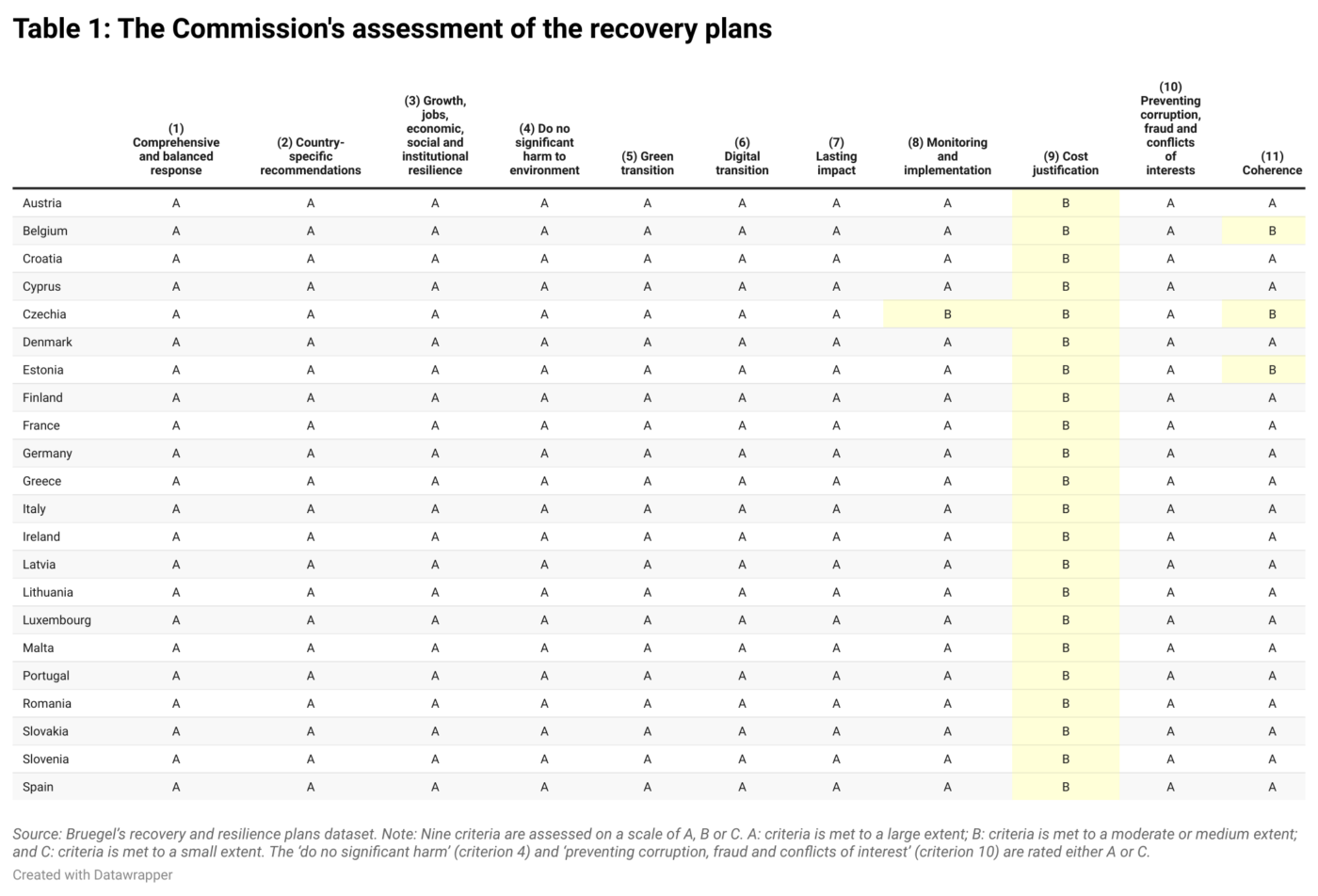
|
|
The Recovery and Resilience Facility (RRF) is the largest component of Next Generation EU, the European Union’s landmark recovery and structural transformation instrument. EU countries must submit recovery and resilience plans, which are assessed by the European Commission and approved by the Council. So far 26 countries (not including the Netherlands) have submitted their plans, of which 22 have been approved. The plans of Hungary, Poland and Sweden (which were submitted in May 2021) and Bulgaria (which was submitted in October 2021) have yet to be assessed and approved.
The Commission assesses the plans against 11 criteria defined in Annex 5 to the RRF regulation, including whether they offer a comprehensive and balanced response, properly incorporate country-specific recommendations from the European Semester, foster growth and the green and digital transitions, and include proper cost justifications and adequate measures for prevention of corruption and fraud.
Strikingly, 19 of the Commission’s assessments of the plans are identical, and all countries obtain a B grade for cost justification. There are only one or two differences under other criteria for Belgium, Czechia and Estonia (Table 1).
Several factors create a risk that good value will not be obtained from EU recovery money. The uniform grade for cost justification raises questions about whether this is the outcome of an objective assessment, and even if it is, it implies medium-quality cost planning (Table 1). EU countries do not have experience of using the budgeting method applied for the purposes of the recovery fund – a method with mixed results internationally. The recovery spending targets countries must meet are mixtures of output and result indicators, while different metrics in different countries makes oversight difficult.

The overall ‘good’ quality of the plans is unsurprising: most plans already incorporate significant comments from hundreds of meetings between the Commission and EU countries. However, the cost criterion requires: “The justification provided by the Member State on the amount of the estimated total costs of the recovery and resilience plan is reasonable and plausible and is in line with the principle of cost efficiency and is commensurate to the expected national economic and social impact”. The identical scores against this criterion raise two questions:
How likely is it that no EU government is able to justify costs to a ‘high extent’?
Here are some of the concerns listed by the Commission for cost justification across all plans:...
more at Bruegel